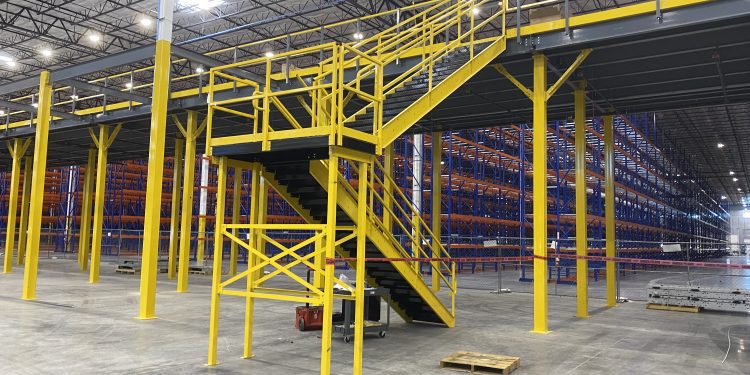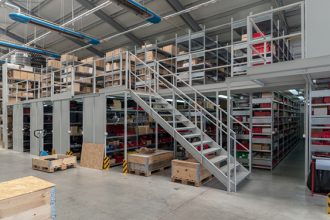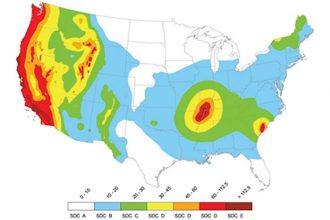A Look at ANSI MH32.1

In order to safeguard your employees on elevated work surfaces, you’ll need to follow these standards.
In the warehouse, much of your employee’s work will take place in overhead work areas that are designed to maximize the vertical space you have available. This can look like rack supported platforms, elevated work platforms and some pick modules. In order for these employees to access the above-ground work areas, they need to climb flights of stairs, and operate on platforms high in the air, which if not installed with safety in mind, can represent a hazard.
The RMI is not the only working industrial group that must concern itself with the safe design of stairs—so, too, is the Storage Manufacturers Association (SMA). With plenty of overlap in the use of fixed stairways attached to structures like pick modules, industrial shelving, free-standing work platforms and more, the two groups combined efforts last year to develop ANSI MH32.1 standard, “Stairs, Ladders, and Open-Edge Guards for Use with Material Handling Structures.”
Having all the information in one standard makes it easier for end users to understand what is required for safe operations. It is important to note that these are work areas that do not fall under the ADA, as they are accessible only to trained employees physically capable of getting into the structures involved.
You should also know that the standard goes above and beyond what you would typically find in the building codes, which often don’t address the specific ladders used to get into material handling structures. Since these systems are restricted to trained employees, Rather, the standard is more specific to does harmonize between Occupational Safety and Health Administration (OSHA) guidelines and International Building Code (IBC) requirements. Because it is a joint standard, neither RMI or SMA can make changes to it without consulting and involving the other group.
One of the design targets is open-edge guards or guarding, which the standard spells out in detail. Guarding must consist of a top rail, an intermediate rail, kickplate and posts. Drilling down, the horizontal top rail must be at least 42 inches above the platform surface. Intermediate rails must be positioned so as able to prevent a 21-inch-diameter sphere from passing through any openings. When tested the guarding should be able to handle a minimum concentrated live load force of 200 pounds.
Additionally, the specification drills down into the difference between guards or guarding and a handrail (sometimes referred to as a grabrail), which are separate protections more commonly found on staircases open to the general public. Guarding is designed to help prevent falls. Handrails, provide added stability to workers going up or down the ladders/stairs. For straight stairs, MH32.1 permit the top rail of the guarding to also serve as the handrail.


